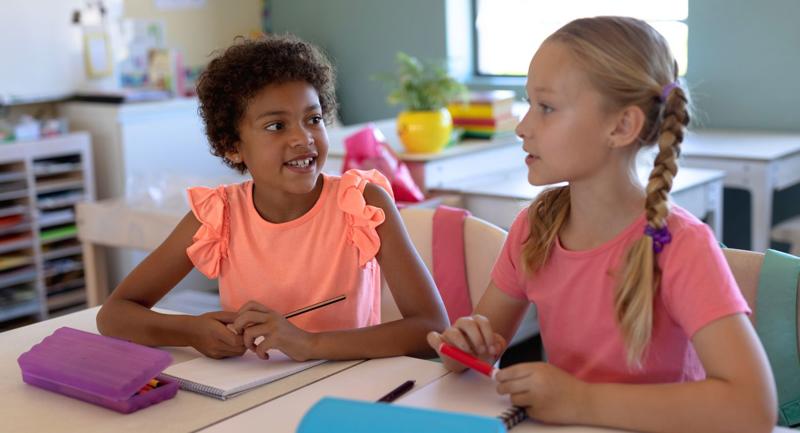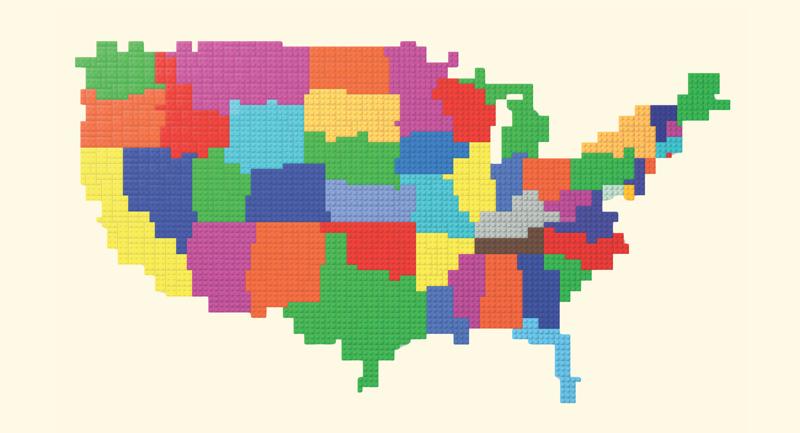As educational researcher Paul A. Kirschner has pointed out, traditional distance learning bears as much relationship to what schools and districts are doing now—what he calls "emergency remote teaching"—as elective surgery in a well-appointed medical facility does to emergency surgery in a makeshift field hospital in a war zone.
Over the last 60 years, we have learned quite a lot about the best ways to teach students when they are not in front of us. Research can never tell teachers exactly what to do—classrooms are far too complex for this ever to be possible—but it can provide some indication of the kinds of constraints that are important to take into account when designing teaching of any kind, and, just as important, identify the "best bets" for making "emergency remote teaching" as effective as possible.
The psychologist David Ausubel argued that the single most important factor influencing learning was what the learner already knew, and that to be effective, teachers should ascertain this and teach accordingly (1968). This may seem obvious, but even in face-to-face teaching, when students all start out with relatively similar amounts of knowledge around a new topic, they will vary dramatically in the sense they have made of what they have heard, seen, or done. It is only by assessing our students that we can determine whether they have understood what they need to understand.
Attention to these processes is even more important in emergency remote teaching, where the usual cues surrounding learning comprehension are difficult, if not impossible, to obtain, and the range of attentiveness and attendance is broader than with in-person learning.
One formative assessment framework that we think is particularly useful derives from considering the roles of teachers, learners, and their peers in terms of three key processes in instruction: where students are going, where they are now, and what they need do to improve.
Figure 1: 5 Instructional Strategies
Over the next few Express issues, we'll lay out practical remote techniques for each of the five strategies. This month, we'll start with the first one: clarifying, sharing, and understanding learning intentions.
Learning Intentions and Success Criteria
In some districts and in some teacher observation protocols, teachers are expected to begin each instructional episode with a clear statement of the learning intentions. We agree that teachers should always be clear about the intended results from an instructional session, but whether this intention is shared with the students—and if so, at what point—is a professional judgment that should be left to the teacher.
For online sessions, there are also many occasions when it might be more appropriate to begin by asking students to write down what they already know about a topic or to begin with an organizing question, such as "Why does it take longer to cook potatoes in an oven at 220°C than it does at 100°C in a pan of boiling water?" The teacher might then share the learning intention with students halfway through the session, at the end of the session, or even at the beginning of a subsequent session.
In all this, it is essential to remember that learning is a change in long-term capability. Although we cannot judge learning until we can check whether students can still do something they've learned at some point in the future, teachers need to make decisions in real time ("Do I need to spend more time on this, or can I move on?"). As well as clear learning intentions, it is useful for teachers to develop success criteria.
Making Success Criteria Count
Success criteria are a sort of "I'll be happy if …" statement, which indicate what level of performance the teacher feels is necessary for learning to take place. There are at least four different forms that criteria can take:
- As limitations on what is expected. For example, a teacher might decide that students are ready to move on to something else when they can, in a session, reliably add two fractions where all numerators and denominators are less than 10.
- As practice in applying learning to different contexts. For example, when students have been discussing the distinction between mass and weight in a terrestrial context, we could ask them whether someone's mass and weight would be the same on the moon.
- As descriptions of what is expected. For example, in a literary analysis, students might be told that the best work demonstrates analytical and interpretive skill, explores alternative approaches and interpretations, and has sustained and concise writing.
- As scaffolding for students' responses. For example, in early-years art instruction, students might be told that when drawing a face, the eyes should be halfway down the face and the distance between the eyes should be similar to the width of one eye.
Success criteria allow us to make better instructional decisions about what to do next and help students manage their own learning.
Making Learning Intentions Visible
What does sharing learning intentions and success criteria look like in remote teaching? For elementary students, one example could use four tools: Google JamBoard, one of many virtual whiteboards available for students to work collaboratively; Google Hangouts, which allows virtual participants to meet in a group and share text, voice, and video chats; Padlet, a virtual bulletin board where participants can collaboratively display information on any topic; and AnswerGarden, an online feedback app to elicit brief responses. Other analog tools could work depending on what technologies schools have adopted.
Students can list and adopt success criteria based on a range offered from the instructors, who encourage them to go deeper. Students digest descriptions into their own words and present them in graphic displays to underscore mastery of intent and to help establish buy-in. Instructors can use AnswerGarden to finalize responses and complete shared learning intentions. Students in one AnswerGarden group working on learning about social contracts might specify "kindness, understanding, and listening individually and collaboratively" as their shared intentions, but might not capture what would be the success criteria of these elements. It is important for teachers to encourage more grounding of these concepts in ways that can be displayed and observed.
In secondary education, we introduce Mistake-Centered Active Exploration (MCAE, pronounced "EM-caw") in Advanced Placement science and mathematics courses (Scalise, April 8, 2020). MCAE does require a bank of reasonably robust assessment tasks, such as interim assessments, teacher common assessments, or curriculum-embedded activities.
For the MCAE mistake emphasis, the approach inculcates a "love" of mistakes (Scalise, April 8, 2020). One of the first student tutorials begins:
"Most people … hate making mistakes, they hate admitting they made mistakes, and they really hate digging into their mistakes to understand why they made them and how to learn from them moving forward. This is too bad because our mistakes are pretty much the most valuable thing we have when it comes to learning something new. Way more valuable than getting something right, because mistakes help us figure out what it is we have to learn to get where we are trying to go."
What does this have to do with sharing learning intentions and success criteria? In MCAE for the secondary context, we can classify mistakes in science and math into three groups: 1) content, 2) strategy, and 3) careless. Content does not mean simple declarative factual knowledge but rather the educational standard being assessed. This may overlap with disciplinary core ideas, practices, and crosscutting concepts, all contained within a science standard. Throughout the MCAE teaching sessions, students learn what these types of mistakes look like for a given assessment task. They also learn how to describe and correct the mistakes, which then become a type of success criteria.
In terms of shared intentions through limitations on what is expected, the teacher decides that students are ready to move onto looking at their performance through an MCAE lens when they can, in a session, reliably find they are describing their mistakes, with few or none in the initial realm. But within the same task, students will find other mistakes still emerging that they can value.
This does not mean that the student isn't responsible for other capabilities, such as strategy, from the start. But if teachers find students are turning to tools or approaches that are out-of-scope or show limited utility for a task, the instructor's feedback can scaffold where to turn until students are closer to mastering the essential standard. In this way, instructors explicitly tell students what the limitations are on what is expected. As students progress, they see strategic competence and adaptive reasoning need developing for the given task or set of tasks.
The shared learning intentions expand into a zone of proximal development, where the teacher and student continue to make meaning together by establishing new expectations in the mistake analysis. It is fascinating to see careless mistakes entering last as a shared expectation, and it turns out they are not really careless at all—but that is a story for another paper.
Learn how to apply the next two strategies of formative assessment in remote teaching: evidence and feedback and student-led learning.







